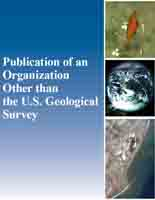Analysis of morphology, failure and post-failure stages of the Palos Verdes debris avalanche reveals that it may have triggered a significant tsunami wave. Our analysis of the failure itself indicates that the slope is stable under aseismic conditions but that a major earthquake (with a magnitude around 7) could have triggered the slide. A post-failure analysis, considering the debris avalanche as a bi-linear flow, shows that peak velocities of up to 45 m/s could have been reached and that the initial movement involved a mass of rock less than 10 km wide, 1 km long and about 50-80 m thick. Initial wave height estimates vary from 10 to 50 m. Tsunami waves propagating to the local shoreline would be significantly smaller. Such a range demonstrates our lack of proper knowledge of the transition from failure to post-failure behavior related to mass movements. Further investigations and analyses of terrestrial and submarine evidence are required for a proper hazard assessment related to tsunami generation in the Los Angeles area. ?? 2003 Elsevier B.V. All rights reserved.


